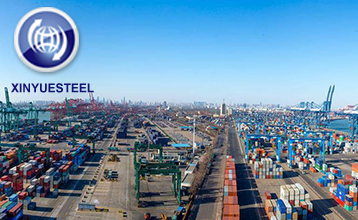Mid-term coal prices are expected to rise
Sep. 10, 2020
The overall performance of the thermal coal market in major producing areas has been relatively strong recently, and the release of production supply is limited. In the Shaanxi and Inner Mongolia regions, the control of coal tickets continued, the supply of low-sulfur coal resources was tight, the stock of coal in the mines declined, and the price of pit coal rose steadily. Driven by the market in the Shaanxi and Inner Mongolia regions, sales in Shanxi and northern Jinbei are good, and the overall price is firm.
In terms of demand, after a period of continuous depletion, power plant inventories have fallen slightly but are still at a medium high level. The available days of coal storage in major power plants continue to remain at a high level of 20 days. The demand for replenishment of power plants in southern my country is not obvious. This week, the temperature in East China and other places has dropped significantly, rains continued in some areas, and the daily consumption of power plants has dropped, which has weakened the supporting role of the thermal coal market. Although the daily consumption of power plants has declined, considering that the replenishment of power plants and industrial power consumption will enter the peak season after the decline in power plant inventories, the demand for thermal coal is still supported, and the power plants in East and South China are still enthusiastic about sending ships to pull transportation. Up to now, 114 ships have anchored in Bohai Rim ports, of which, Qinhuangdao Port and Huanghua Port have anchored a total of 75 ships, and most of them are transporting Changxie coal.

Entering this week, port inquiries and actual transactions have improved. The problem of structural shortage of coal resources in the port's low-sulfur market still exists, and low-sulfur coal continues to remain in short supply; however, due to the early rainfall and collapse of the coal, the coal is soaked. Due to the influence of factors such as, card dropping and other factors, the seller’s willingness to ship goods has increased, and the demand for medium and high sulfur and high ash coal has been deviated.
In September, after the monthly long-term agreement prices of major coal companies dropped sharply, they were close to the current market coal prices. The market price of coal is no longer advantageous, and the willingness to purchase large quantities is not strong. However, considering that the Daqin line will be overhauled at the end of the month and energy-consuming industries such as cement and building materials are about to resume work and production, a certain number of ships are still being transported on the north-south route. This week, port market sentiment improved slightly, inquiries and transactions increased, and low-sulfur coal types were generally quoted on an upward basis. However, the demand for thermal coal has not yet fully started, the price reduction is also obvious, and the transaction price is low. Low-sulfur 5,000 kcal Jinbei coal is quoted at 500 yuan/ton, and the power plant’s winning bid is equivalent to the Beigang closing price of 495 yuan/ton.
Regarding the Bohai Rim ports, the volume of railway transfers slowly recovered. However, due to improved delivery efficiency, coal storage at Qinhuangdao Port and SDIC Jingtang Port continued to maintain low levels, while coal storage at other ports remained unchanged. Affected by the rise in futures, traders have a strong bullish sentiment. It is worth noting that downstream non-electricity and power purchase demand has been gradually released, and the industrial power load has increased; with the strong support of the pit, traders have limited room for concessions. It is expected that in the middle of this month, coal prices in ports will rise.



